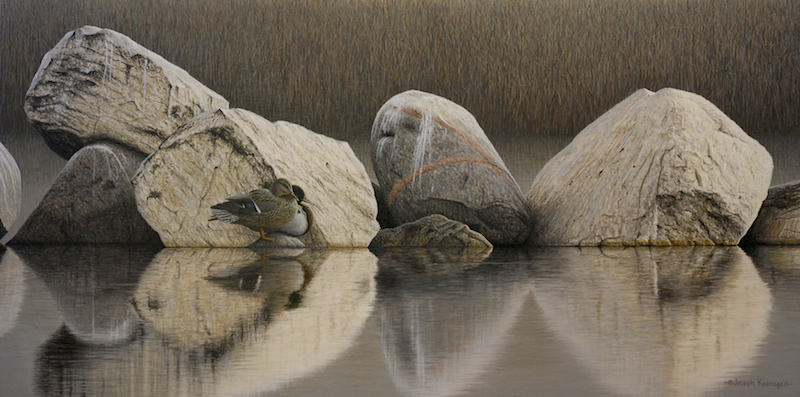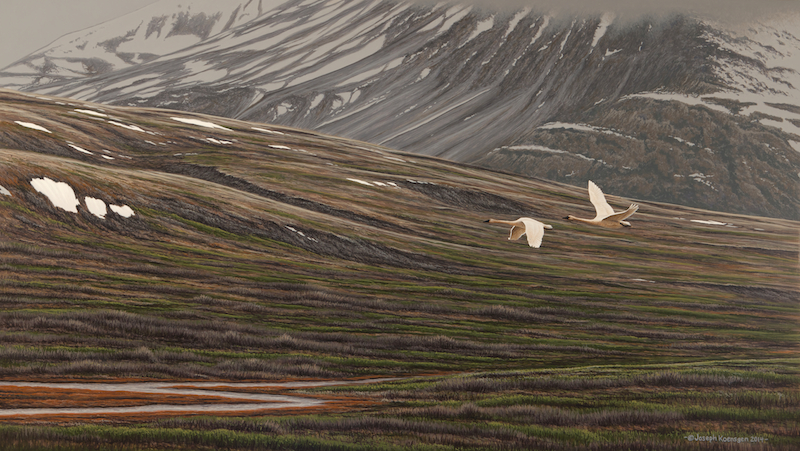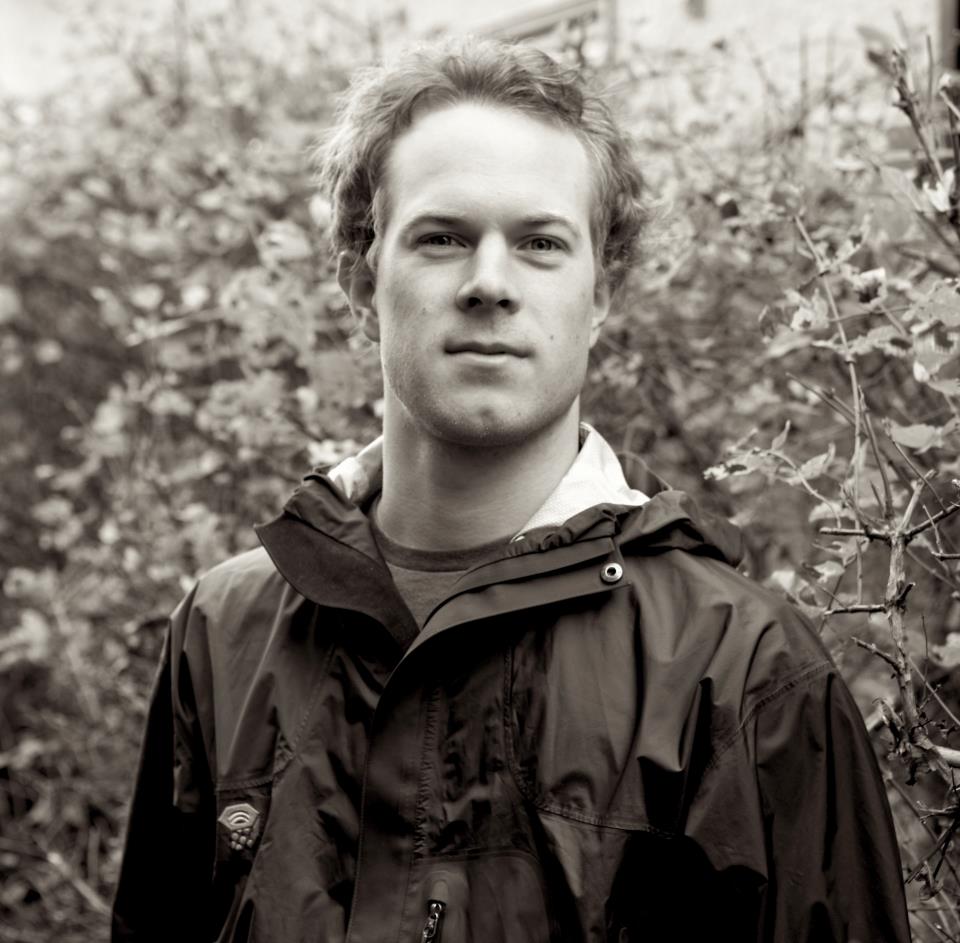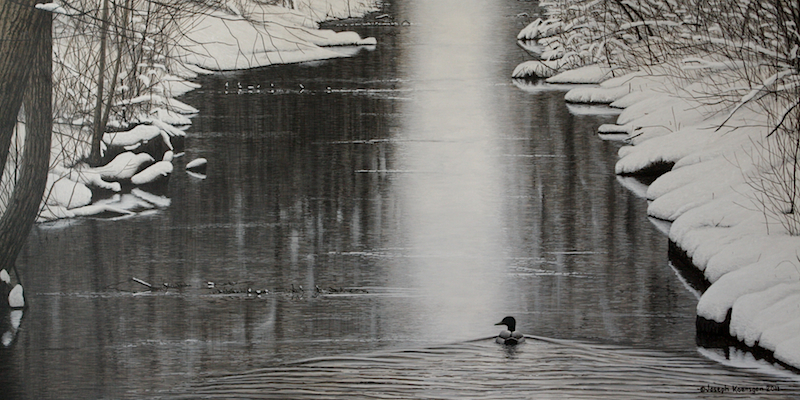Off-Season Artists: Joseph Koensgen
It’s that time again! Here’s our next edition of Off-Season Artists! That’s where Alex, who takes flight on majestic wings of Wifi, spends a little time talking to our favourite creators.
In this instalment, he interviews painter, photographer, hiker, and conservationist, Joseph Koensgen.
Enjoy!
So Joseph, I’d love to hear a little bit about what life was like growing up. Did you live in the Winnipeg area all your life? When did your fascination with the outdoors begin?
Yes, I have lived in the Winnipeg area my whole life. I grew up just outside of Winnipeg where there were many forests and fields close by. I was always an outdoors kid, wanting to explore, and I was just generally interested in being in nature. I always had a love of animals and any chance I could get to try and see some I would, with most of my observations coming from backyard birds at the birdfeeder. I also had the great fortune of many family trips to Riding Mountain National Park, a place I still frequent. This gem in Manitoba played a huge part in my love of nature as its untouched landscape inspired me then, and still does today.
I believe it! Part of that affinity for the outdoors seem to stem from a tremendous love for hiking. I’m guessing that came about when you were younger as well. Your Instagram is full of images of big-sky Manitoba from a natural, isolated vantage point. Where are your favourite places to hike? And aside from providing visual subjects for your painting, how does being out in nature contribute to your art?
I absolutely love to hike. Getting out into nature with a good trail and a camera is one of my favourite things to do, and my Instagram feed would give a pretty good glimpse of what I like to do and where I like to go. My favourite places to hike in Manitoba are Riding Mountain National Park and Whiteshell Provincial Park. A little closer to home would be Bird’s Hill Provincial Park, a smaller but equally enjoyable place to hike. Each season in these places offers something different with the pinnacle of colour and inspiration being the fall. Being in these places and getting inspired by a scene is what goes into my art. Seeing it and feeling it means I am able to put those things, as best I can, into my art. I’ve noticed that my best work comes from something directly inspired by an experience rather than something I’ve pieced together from multiple locations. Not to say that I can’t be inspired by many things, but a rewarding feeling is being patient enough to capture a scene as it happens, and translate that into a piece of art. There is always a range of emotions I experience when this happens and it’s a delight to see it come out in my art.
This set of passions also must tie into your work as a naturalist and conservationist. Can you tell me a bit about your background there? What led you down that path? What kind of work do you do in those fields?
It was a fairly recent addition to my passion as a nature artist. As I had grown in my interest and skill as a nature artist, I began to read and learn more about the concerns and conservation issues all around me. I then joined an organization called Artists for Conservation in 2013, which was doing something that I wanted to do myself—use art as an avenue to raise awareness and money for the conservation of the natural world. And since then I have been involved in their annual shows and have used my art and sales for just that. I have also submitted art for the Ducks Unlimited Canada National Art Portfolio, which sells prints to raise money for wetland conservation. I have had the honour of being selected in 2012, 2014, 2015, and 2016. This has been a wonderful experience, and I will continue to submit work, as well as work with other conservation organizations.
 “Frost”
“Frost”
Moving on to your art, I notice a real visual unity in each painting. It’s something about the way you bring together your tones and compositions to make the wildlife one with their surrounding landscape. It really does remind me of encountering wildlife on a hike. It’s always an amazing moment, but without the accentuation or fanfare that some painters might add to their wildlife subjects. How did you arrive at that style?
When I was young, I was—and still am—very inspired by one of the great wildlife painters, Robert Bateman. I studied his work when I was young and well into high school. After taking a long break, I found myself wanting to do art again. I bought a camera and started up again, working from my pictures. I usually try and depict the animal the way I’ve seen it, in its natural setting without getting too lost into how I think it would act or behave. And the experience of seeing these animals is something I’m striving to recreate at the easel. Of course, I’m also interested in a pleasing composition, but I’ve hopefully steered clear of anthropomorphizing my subject too much. But there is a certain look to my art that I am going for. I like colour harmony and pleasing shapes and motions in my paintings. I like to keep the realism to a point to where you could say, “I’ve seen something like that!” I love hearing that, because if my art brings someone back to somewhere or something they’ve experienced, then I know I’ve captured it well.
 “Calm”
“Calm”
In terms of wildlife, birds seem to be your most enduring subject. What makes them such a favourite of yours?
It started from a young age. I had always been interested in animals, and birds were very accessible because I could sit at the window and watch them come to the backyard bird feeder. It was a fantastic venture for a kid interested in nature. I would love to see what types of birds would show up and at what time of year. As well as researching what types of things would get uncommon species out in front of my camera. As I got older my affinity for birds remained, and I have been able to see more and more types of birds as my travels have expanded and the digital age of cameras has made it easy to capture.
I notice that in your paintings—even when they’re a sweeping mountain image like “Across the Valley,” which I love!—you often seem to be working from a high angle or zoomed in close. It’s often a creature framed by the ground or foliage around them, without extending the composition upwards into the sky. Is that the focused photographer in you? The naturalist’s scrutiny?
 “Across the Valley”
“Across the Valley”
By the way, while we’re speaking of “Across the Valley,” where did that painting originate? It looks like parts of the Yukon to me.
I would say that is more the focused photographer in me. I do want to accurately portray the settings I choose, so the naturalist in me pays attention to that, but my art is heavily influenced by my eye as a photographer. Although, recently I have been inspired to expand my paintings into some more large and sweeping compositions that include skies and mountains. Mostly because of a recent trip to the Yukon, as you accurately noticed about one of the first paintings I did from that trip, “Across the Valley”. The Yukon was one of the most amazing natural wilderness areas I’ve been to. Huge mountains, large sweeping valleys, and thousands of kilometers of untouched forest. Truly the nature lover’s playground. Even though I have yet to really get many pieces out from that trip thus far, I’ve got a great number of ideas that include these huge skies. I hope to expand my work in that way for a few pieces as I think it’s good to continually change things up and be inspired by different landscapes. It’s also a good thing to keep oneself challenged by new and engaging ideas that at first glance, seem tough to recreate with paint, but would be very rewarding as a finished painting.
I couldn’t agree more about the Yukon. If the word “epic” were a location, that’d be it! But just to finish up: just for fun, what’s something we might not know about you?
I have been playing the guitar for about 15 years. I started when I was a teenager and just kept it going from there. What I like to play is blues guitar. I’ve always enjoyed blues music and the great expression that can be done when playing a blues guitar solo. I don’t play as often as I used to, but I still enjoy it just as much.
So that’s Joseph Koensgen! It was a pleasure to get to know him…
We’ll be back in a couple of weeks with another interview, so stay posted, art lovers!





